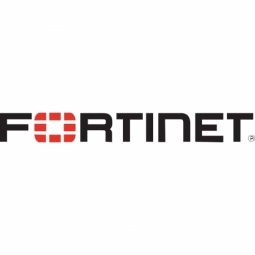
Technology Category
- Cybersecurity & Privacy - Cloud Security
- Platform as a Service (PaaS) - Application Development Platforms
Applicable Industries
- Cement
- National Security & Defense
Applicable Functions
- Maintenance
- Product Research & Development
Use Cases
- Construction Management
- Tamper Detection
Services
- Cloud Planning, Design & Implementation Services
- Training
The Customer
Steelcase
About The Customer
Steelcase is a globally recognized manufacturer of office furniture, founded in 1912. The company focuses on user-based research and design to create spaces for the world’s leading organizations. Steelcase operates globally and distributes through a network of independent and company-owned dealers, as well as selling directly to end-users. The company has always viewed technology as a key differentiator in its business and has been an early adopter of virtualization and cloud-based solutions. Recently, Steelcase introduced Workplace Advisor and Personal Assistant, a space sensing network and mobile app created to help organizations harness big data to optimize the workplace.
The Challenge
Steelcase, a renowned manufacturer of office furniture, has always viewed technology as a key differentiator in its business. The company recently introduced Workplace Advisor and Personal Assistant, a space sensing network and mobile app designed to help organizations harness big data to optimize the workplace. However, as Steelcase operates globally and distributes through a network of independent and company-owned dealers, as well as selling directly to end-users, the company faced challenges in securing its data both on-premises and in the cloud. The company had been using the Microsoft Azure platform for its web infrastructure and was developing a cloud-based e-commerce system using Amazon Web Services (AWS). However, the security controls and visibility provided with these cloud platforms were basic and not to the level of sophistication that Steelcase's policies required.
The Solution
Steelcase turned to Fortinet, a long-time partner, to supplement the gaps in the Microsoft and Amazon products. The company deployed Fortinet FortiGate next-generation firewalls (NGFWs) to secure its perimeter and for end-to-end protection. FortiAuthenticator provided Steelcase with centralized user identity management and simplified administration for authentication. FortiAnalyzer delivered a consolidated view and comprehensive reporting across all Fortinet devices in the widespread Steelcase environment. A cloud-based spam filtering service was replaced with the Fortinet FortiMail secure email gateway to provide powerful multi-vector detection and protection capabilities. As the company began ramping up its use of Azure, it leveraged the broad portfolio of Fortinet cloud-related solutions. Developers at Steelcase gained access to the Azure environment by using VPN tunnels established between on-premises FortiGate devices and a combination of the Fortinet FortiGate VM for Azure and FortiWeb VM web application firewalls (WAF) hosted in the cloud.
Operational Impact
Quantitative Benefit

Case Study missing?
Start adding your own!
Register with your work email and create a new case study profile for your business.
Related Case Studies.

Case Study
System 800xA at Indian Cement Plants
Chettinad Cement recognized that further efficiencies could be achieved in its cement manufacturing process. It looked to investing in comprehensive operational and control technologies to manage and derive productivity and energy efficiency gains from the assets on Line 2, their second plant in India.

Case Study
Data Capture for Afghanistan Forces
Electronic equipments on the field of Afghanistan provided information on the status of the vehicle and to identify potential threats surrounding it to the British Force. The monitoring and interpretation of this data requires robust and sophisticated digitization for data capture and communication.

Case Study
Digital Transformation of Atlanta Grout & Tile: An IoT Case Study
Atlanta Grout & Tile, a Tile, Stone & Grout restoration company based in Woodstock, Georgia, was facing challenges with its traditional business model. Despite steady growth over the years, the company was falling behind the web revolution and missing out on the opportunity to tap into a new consumer base. They were using independent software from different vendors for each of their department information and workforce management. This resulted in a lot of manual work on excel and the need to export/import data between different systems. This not only increased overhead costs but also slowed down their response to clients. The company also had to prepare numerous reports manually and lacked access to customer trends for effective business decision-making.

Case Study
Major Aerospace Company Automates Asset Management
The O&M division of an aerospace and global security company was using spreadsheets to manually track more than 3,000 assets assigned to students and staff. Maintaining audit trails for this high volume of equipment became increasingly time-consuming and challenging. The chore involved knowing precisely what equipment was on hand, what had been issued, its location and the name of the custodial owner of each item. Every aspect of this task was carried owner of each item. Every aspect of this task was carried out by individuals with spreadsheets. Manually documenting the full lifecycle of each asset added to the burden. This included tracking maintenance requirements and records, incidents and damages, repairs, calibrations, depreciation, and end-of-life data.

Case Study
Revolutionizing Construction Equipment Rental: A Case Study on ProsRent and ENO8
ProsRent, a startup that won the 'Best Financial Opportunity' and 'Best Pitch' at CodeLaunch 2016, aimed to revolutionize the way construction professionals source and rent heavy equipment. In the construction industry, project managers and contractors typically rent heavy equipment from supply companies. However, predicting inventory can be challenging, and finding the required equipment at the right time and place can be a hassle. If the preferred vendor doesn't have the required equipment, it results in wasted time and money in searching for it, often leading to higher costs due to non-preferred rates and increased delivery costs if the vendor is located far from the job site. Suppliers, on the other hand, desired access to a wider base of trusted renters that they didn't have to vet themselves and wanted to offer dynamic rental pricing based on demand and availability in their market. ProsRent's challenge was to produce a minimum viable product that was fast and first to market but also strong enough to engender loyalty and repeat business from the target market.




